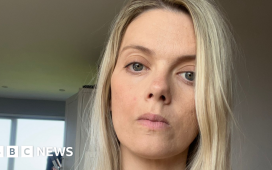NHS doctors have begun treating people with one of Britain’s most common sleeping disorders with a pioneering implant that helps patients get a better night’s rest.
The procedure involves implanting a small device in the chest of people with sleep apnoea to prevent their breathing stopping and starting hundreds of times while they are asleep.
Doctors estimate that 1.5 million Britons have sleep apnoea, though 85% of them are thought to have not been diagnosed and so are not receiving treatment. The condition leaves people tired, cranky and susceptible to accidents and can increase the long-term risk of a stroke and heart disease.
Guy’s and St Thomas’ (GSTT) health trust in London has become the first NHS care provider to use the device. International studies have shown it is highly effective in relieving sleep apnoea’s debilitating symptoms, which can include low libido and mental ill-health.
Yakubu Karagama, a consultant ear, nose and throat surgeon at GSTT, has so far implanted the device in three people with obstructive sleep apnoea (OSA), the more common of the two forms of the condition. It occurs when someone’s airway becomes blocked while they are asleep because their tongue has dropped backwards when they are lying on their back.

People with ODA are advised not to drive in case they crash as a result of being starved of sleep, and are also more likely to have an accident while operating equipment.
The device is known as a hypoglossal nerve stimulation implant because the hypoglossal nerve controls the movement of the tongue. Roughly the size of two 50p coins or a pacemaker, it is inserted under the skin on the chest wall in an hour-long operation.
“It is then connected to a cable just 2mm in diameter and 30cm long that is tunnelled under the skin and connected to the nerve that moves the tongue,” said Karagama.
“It works by stimulating the tongue muscle to contract forward and drawing the tongue out of the windpipe to allow normal airflow in and out of the lungs. Nothing is visible outside the skin.”
Patients use a handheld controller the size of a computer mouse to turn the device on 30 minutes before they plan to sleep, and off again when they wake up.

It is most suitable for people diagnosed with moderate to severe OSA who cannot use a continuous positive airway pressure (Cpap) machine to assist their breathing overnight, Karagama said. Cpap involves blowing air pressure into someone’s throat to stop their windpipe from shutting but users often find the tightly fitting face mask that covers the nose and mouth uncomfortable.
Karagama said: “Sleep apnoea can cause significant physical, functional and emotional issues as a result of sleep deprivation. .
“This treatment isn’t suitable for everyone and many people will benefit from proven, conventional treatments such as Cpap. In a small group of patients who have moderate to severe sleep apnoea, where other treatments have failed, this new device could be a solution. I’m delighted that it is making a huge difference for our patients.”
OSA is associated with obesity but it can also affect people with large tonsils or weak throat muscles. It can appear in people of any age but is more prevalent among older people.
One of GSTT’s three recipients said: “My sleep apnoea is down from 36 to 40 episodes per hour to three or four. I feel rested in the morning and get good quality sleep. Hopefully more patients will have access to this treatment soon.”
Tens of thousands of people in Europe and the US have already had the device implanted. GSTT hopes to offer the procedure to other patients soon.
‘I’m more energised’

Matthias Winker, from Reading, had lived with severe sleep apnoea for more than four years, and conventional treatments had failed before he had the new implant. Here, the 40-year-old, who works in management consultancy, describes the huge benefits the procedure has brought.
“Without using a continuous positive airway pressure (Cpap) machine I was having over 40 episodes an hour and would stop breathing for up to 45 seconds at a time. This major disturbance in sleep left me tired and with low energy throughout the day. In the long term I was at higher risk of having a stroke and heart disease and a generally poorer quality of life.
“The Cpap helped to mitigate the sleep apnoea. However, relying on Cpap was highly unpleasant and inconvenient, especially on travels. It might have controlled the sleep apnoea but it wasn’t the right solution for me, considering I have statistically another 35-40 years left to live.
“This therapy has been a tremendous success. I now only have two or three episodes per hour for a few seconds at a time and then the device jumps in so I can breathe. It took some time to get used to but now it’s comfortable and doesn’t wake me up in the night.
“It’s very exciting to be part of such an innovative pioneering treatment. It’s had absolutely fantastic results. I’m more energised. I have a better quality of sleep, I’m more alert and my concentration is much better. My general mood has also improved because I’m not constantly tired.”








